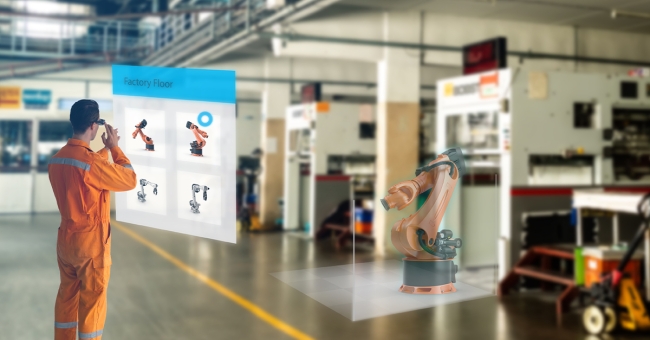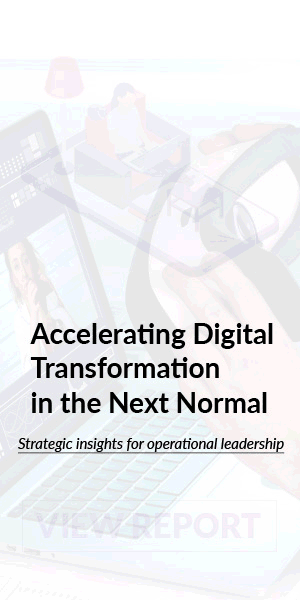Topics
How Mixed Reality Is Helping to Offset the Labor Shortage

Between an aging workforce, the ongoing Great Resignation and increased demand from businesses in a growing economy, the labor shortage is a persistent challenge that successful enterprises are already beginning to adapt to. With a predicted worldwide worker shortage of 85.2 million by 2030, corporate leaders are investing in ways to adapt and overcome.
Although we usually associate worker replacement technologies like robotics and business process automation as solutions to this issue, tech can also help offset the labor shortage by augmenting existing employees to make them more productive, as well as attract and onboard new talent. Mixed reality (MR) technologies, such as augmented reality (AR) and virtual reality (VR), are particularly suited to rise to this occasion.
That’s why, when CGS surveyed dozens of operational leaders at top enterprises, we saw plenty of good reasons why 80 percent of respondents either agree or strongly agree that AR will help their organizations gain a strategic/competitive advantage. The benefits that they point toward—such as increased employee productivity (43 percent), remote connectivity/collaboration (26 percent) and accelerated training (32 percent)—are all ways that AR helps to alleviate the labor shortage.
Here’s how.
Improving Employee Performance
It’s an essential part of what makes us human: We use tools to be more effective and productive. AR does just that, enabling organizations to make up for a smaller quantity of human resources with higher quality performance.
First, AR improves agility through use cases like remote collaboration and extended expert reach. Considering that 26 percent of survey respondents say that 26–50 percent of their workforce will continue to be remote/deskless and 21 percent say that more than 50 percent will work from anywhere, crossing these geographic limitations will be a major challenge for many companies going forward.
Whether that means using VR meetings to reduce travel time or enabling on-the-ground technicians in even the most remote locations to access expert support, MR technologies save time, reduce errors and facilitate better outcomes.
AR also appreciates the value of human capital through both upskilling and accelerating many on-the-job tasks. Enterprises are seeing the benefits of experiential learning via AR for corporate learning and development (L&D). These training programs promote upskilling and career growth, helping employees to achieve their goals and enterprises to fill skill gaps without acquiring new talent.
This technology also has many uses for industries like manufacturing and construction, two sectors that are particularly impacted by the labor shortage. For instance, in a study published in Automation in Construction, researchers found that MR improved productivity among electrical construction personnel.
They write, “The results suggest that MR enabled a significantly higher productivity rate; reduced the time required to understand the design; led to fewer errors during the assembly process; and increased the number of accurately constructed conduits as compared to the conduits constructed using traditional paper.” Interestingly, they also found that “the less-experienced group using MR was still faster than the most experienced individuals using the current, paper-based approach.”
We’re seeing similar efficiency gains in the aerospace industry. In an article from Aerospace Manufacturing and Design Magazine, they conclude “AR technology can lower aircraft-on-ground times by more than 60%, create 70% productivity gains, boost asset uptime by 65% to 70%, and triple the number of daily inspections.”
Simply put, AR is an incredible tool. Those who leverage it will gain a huge advantage in a tight labor market.
Attracting and Onboarding New Talent
On the other side of the equation, there’s no denying that organizations will continue to need to attract new employees then bring them up to speed as quickly and efficiently as possible. AR serves multiple purposes on this front by establishing a business as forward-thinking and tech-savvy, by showcasing positive working environments via 3D virtual tours, and, of course, by affording them with an immersive onboarding experience.
One example of using MR to attract new talent comes from the National Association of Manufacturers’ “Creators Wanted” campaign. These 3D VR tours feature several manufacturing facilities and are designed to change misconceptions about factory floors being dark, dirty and dangerous.
Then there’s the multitude of ways that companies are accelerating and improving training programs using AR. By incorporating feature-rich visualization tools, real-time collaboration, performance tracking and analytics and the ability to service trainees from anywhere, platforms like TeamworkAR™ offer proven results: 150 percent better performance than those that use paper-based training materials, a 60 percent increase in learning effectiveness and 50 percent faster task performance.
We also see this reflected in our survey results. In fact, training and development was the #1 way that respondents say they plan to apply AR/MR technology to their company’s processes or services, with about 56 percent agreeing that L&D is a top use case. By giving new employees the opportunity to learn how to do their jobs in a risk-free and controlled environment, they’re able to gain all the benefits of hands-on learning without taking machinery off the line or assuming any liability.
Conclusion
If there’s one thing that we’ve learned over the past couple years, it’s just how resilient we can be. The labor shortage may continue to be an ongoing problem for many years to come, but that doesn’t mean it’s an insurmountable obstacle. By implementing advanced technologies, including MR among others, enterprises are able to position themselves to better deal with anything that comes their way.
Ready to learn more about how operational leaders are adapting to a changing business landscape with MR technologies? Download your free copy of our Operational Leaders 2022 Annual Tech Trends Report.

